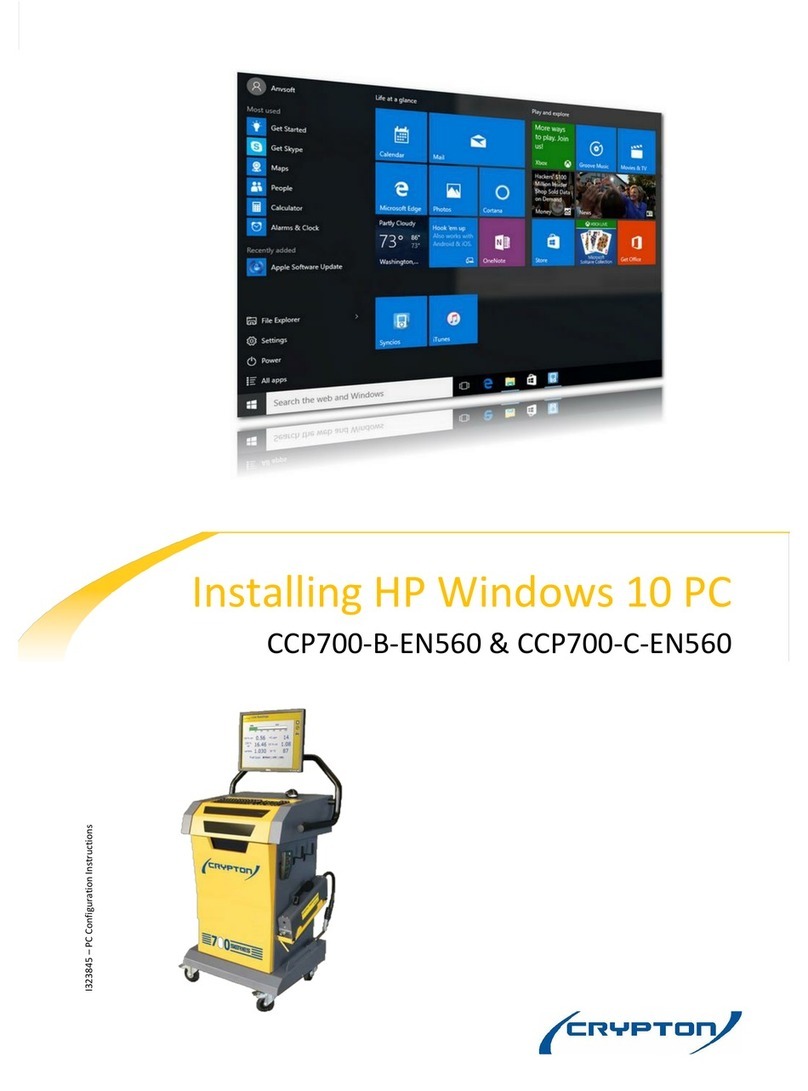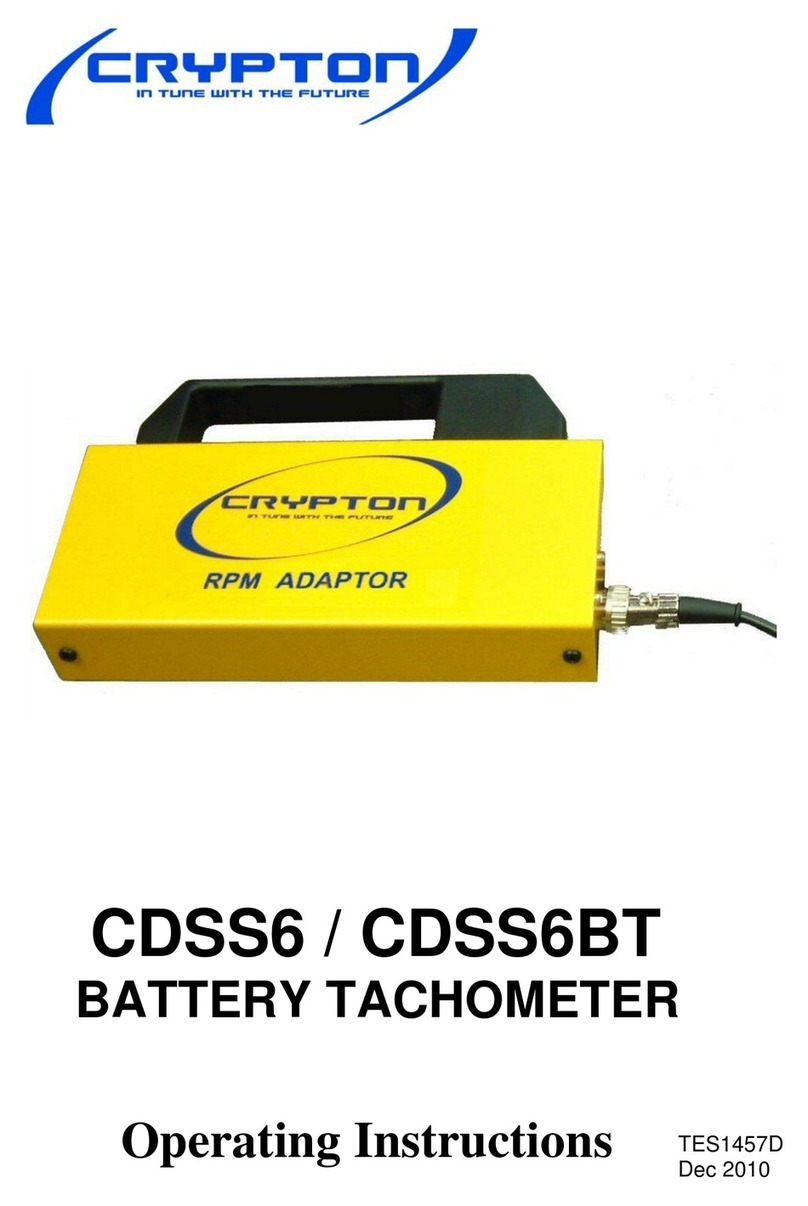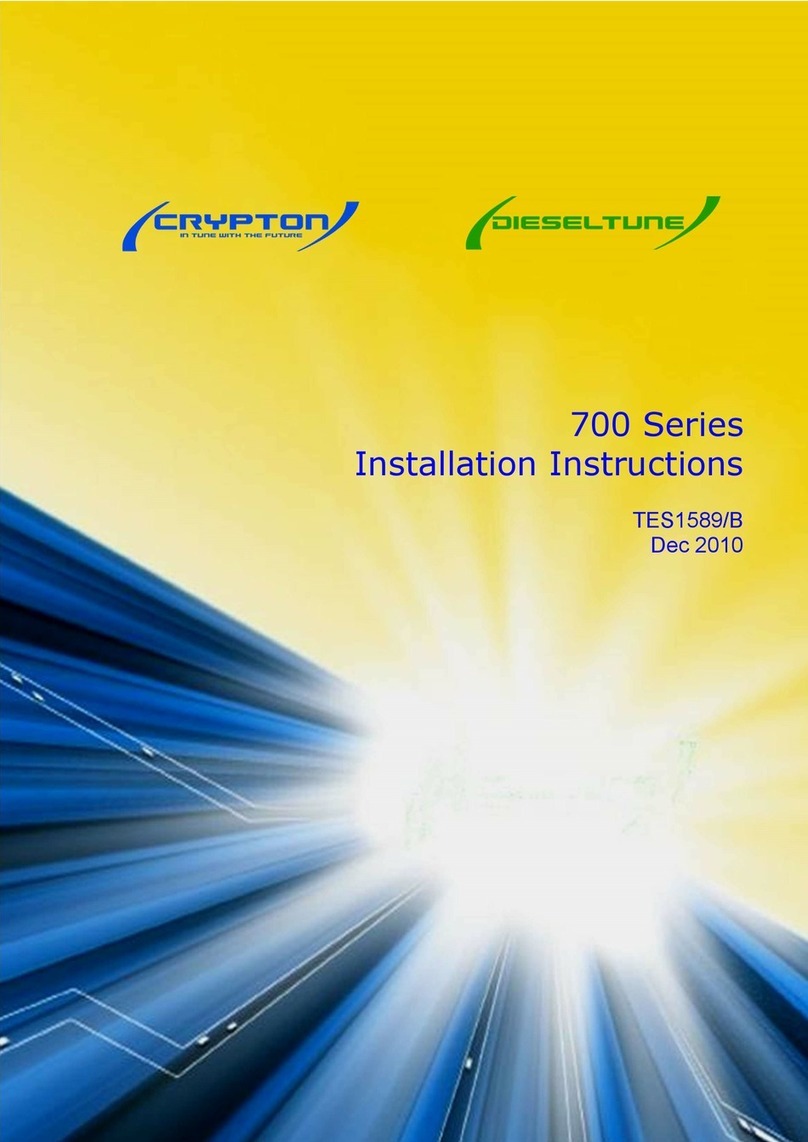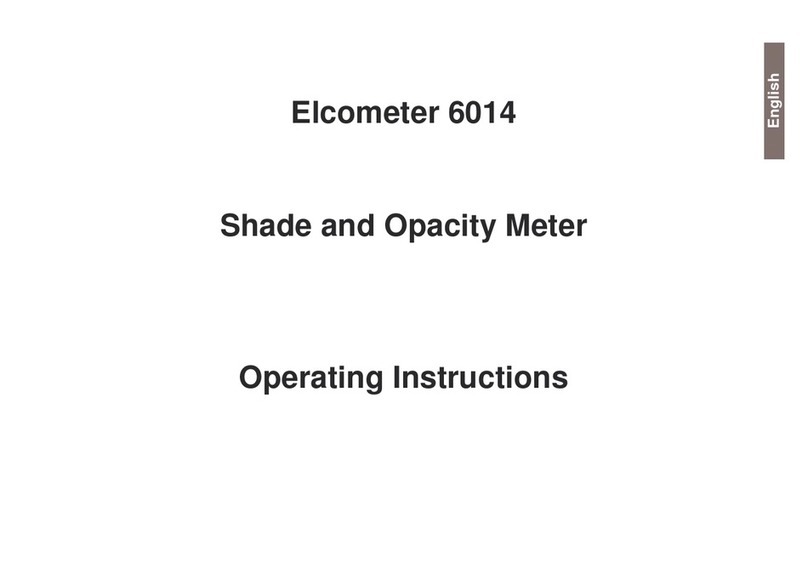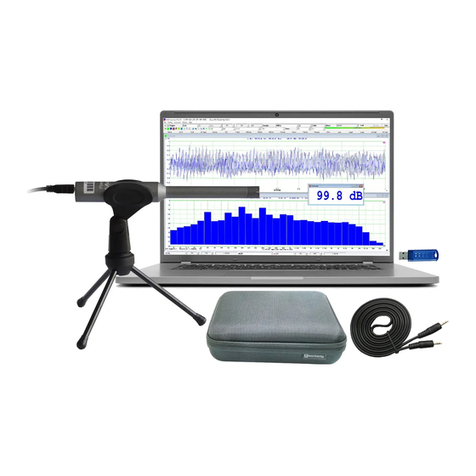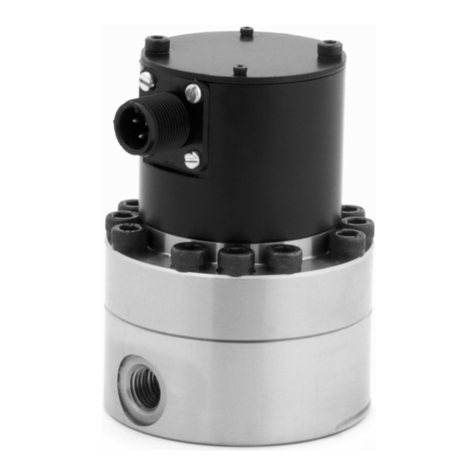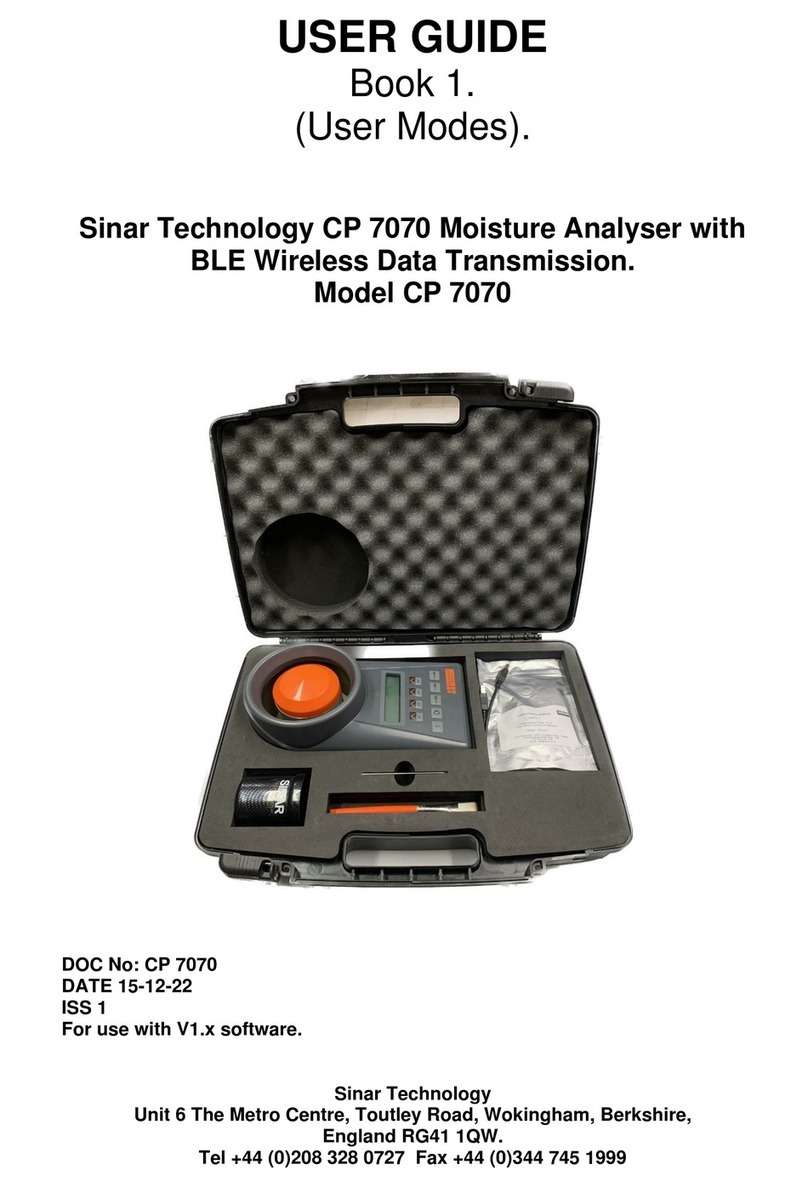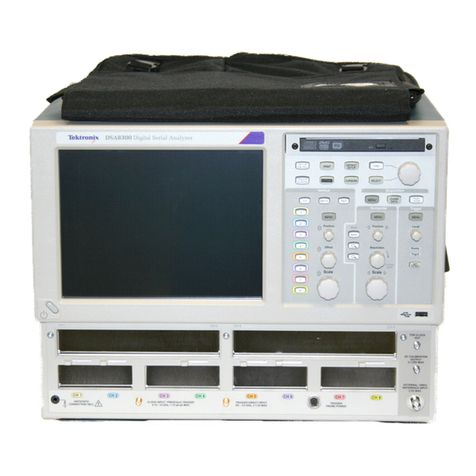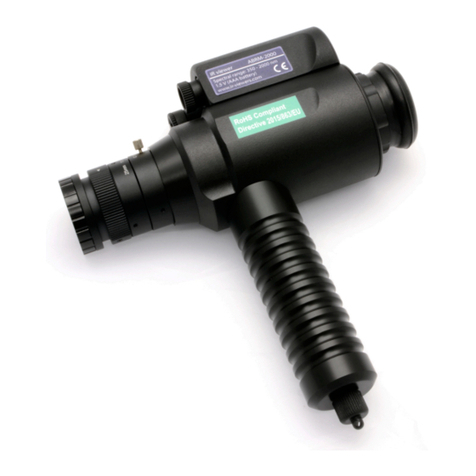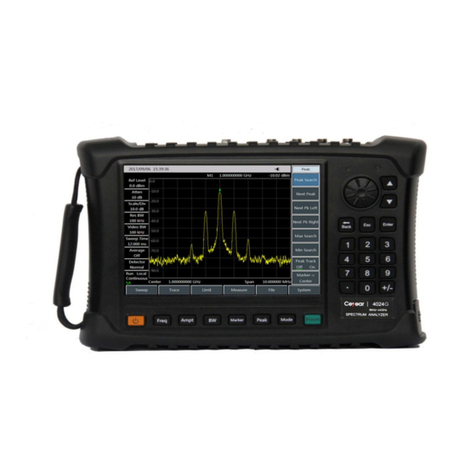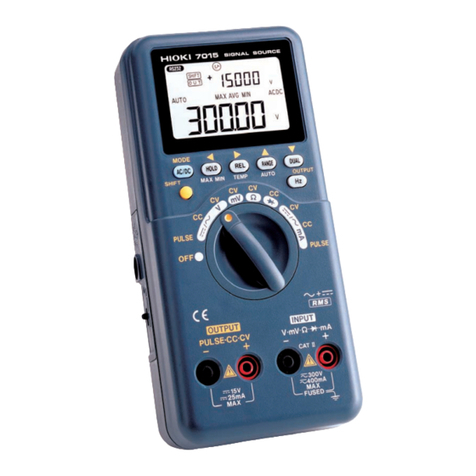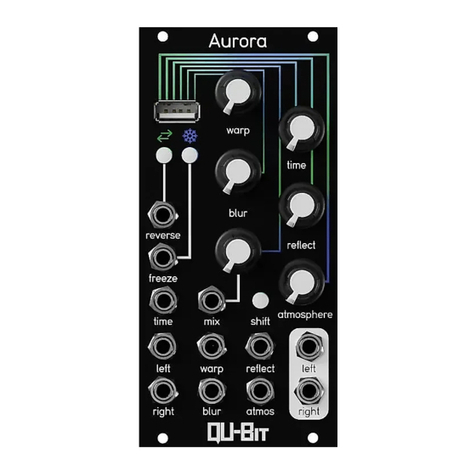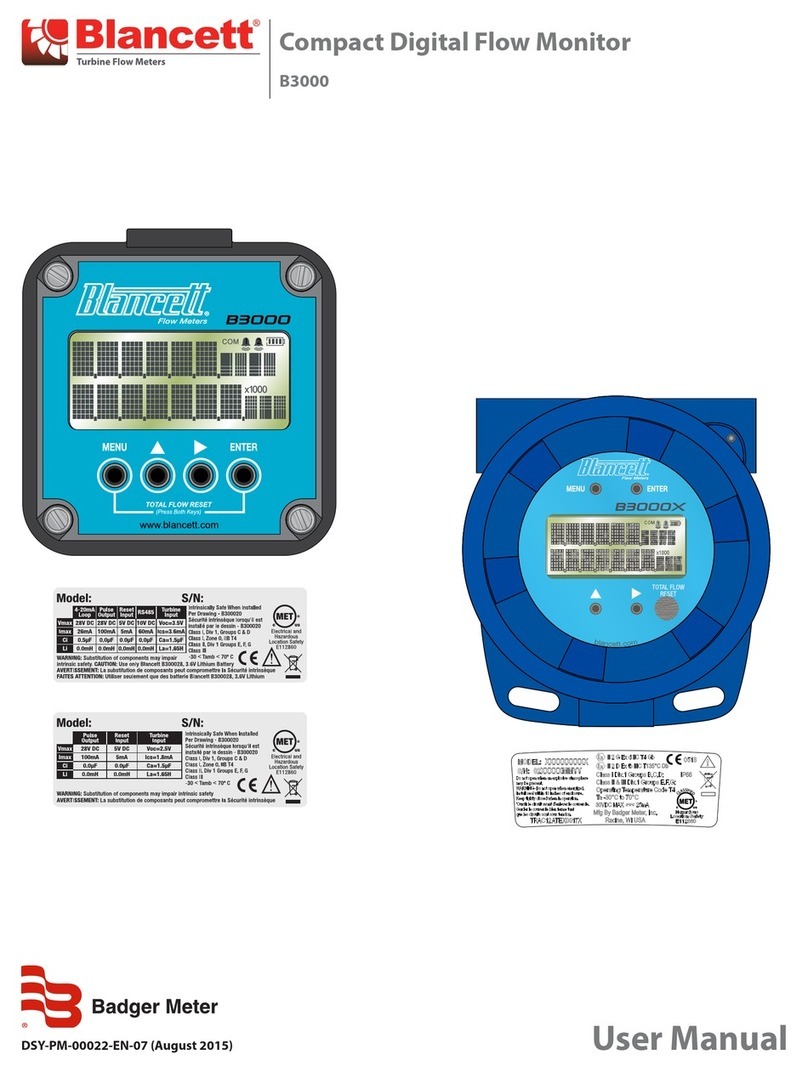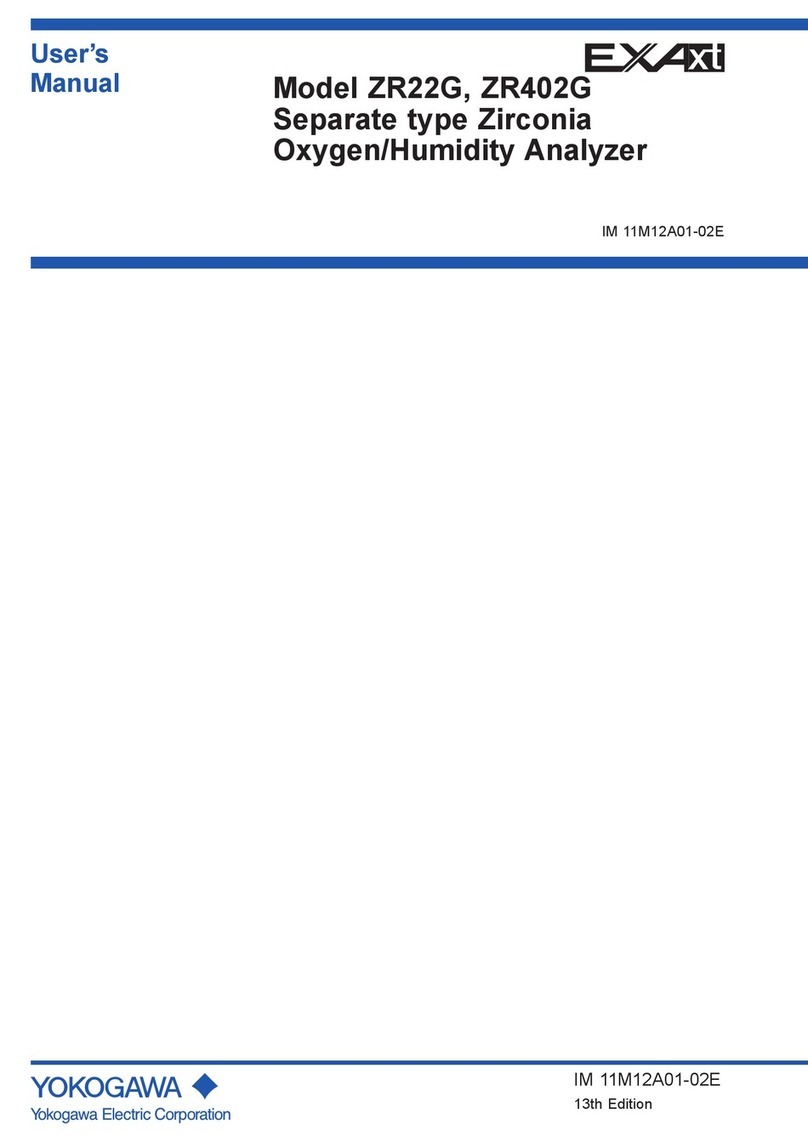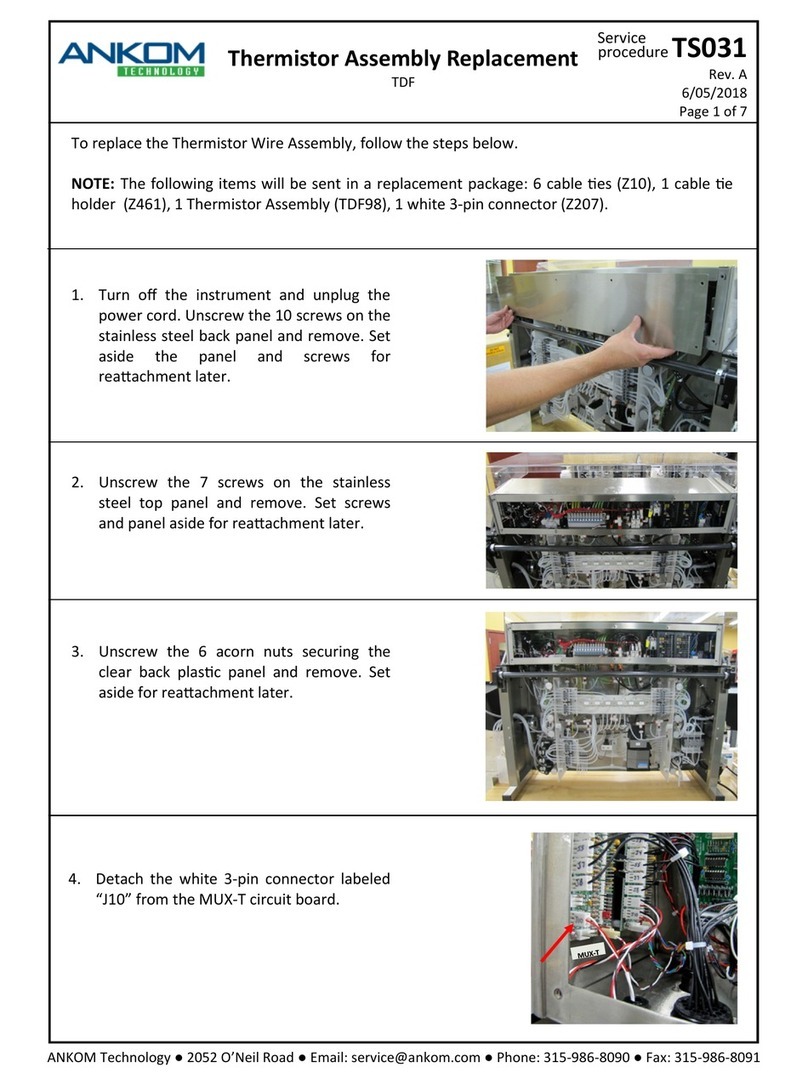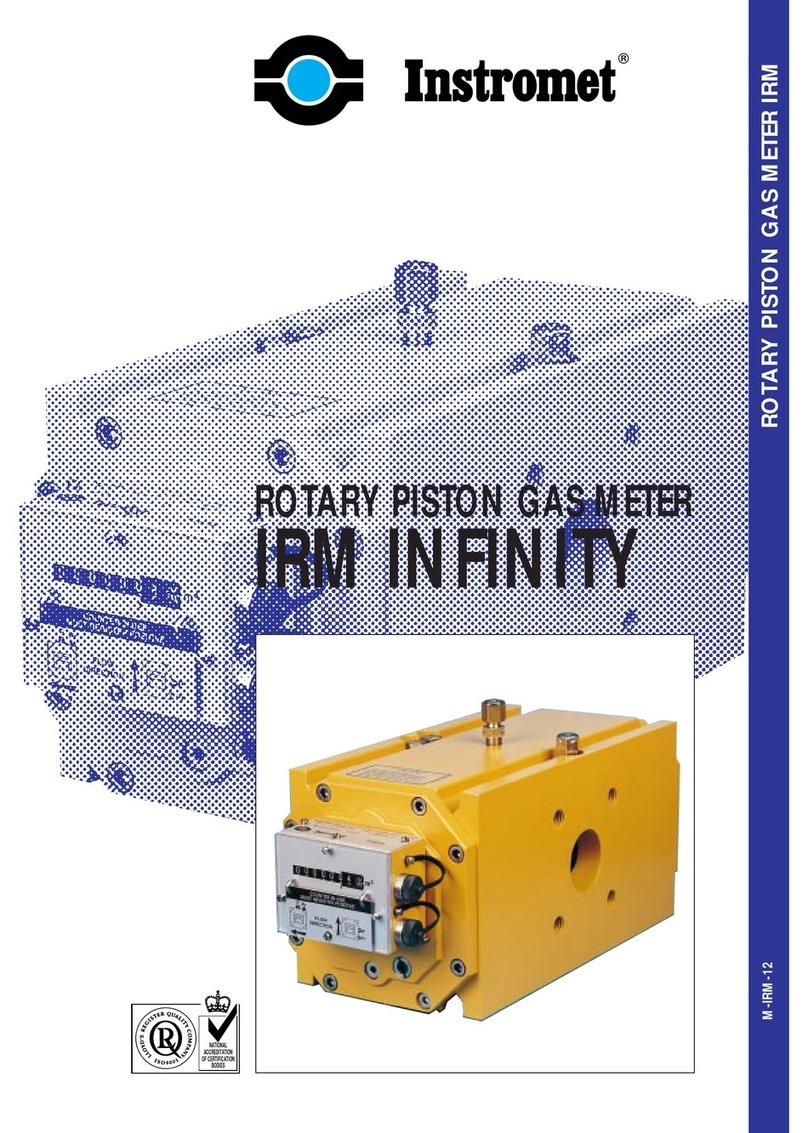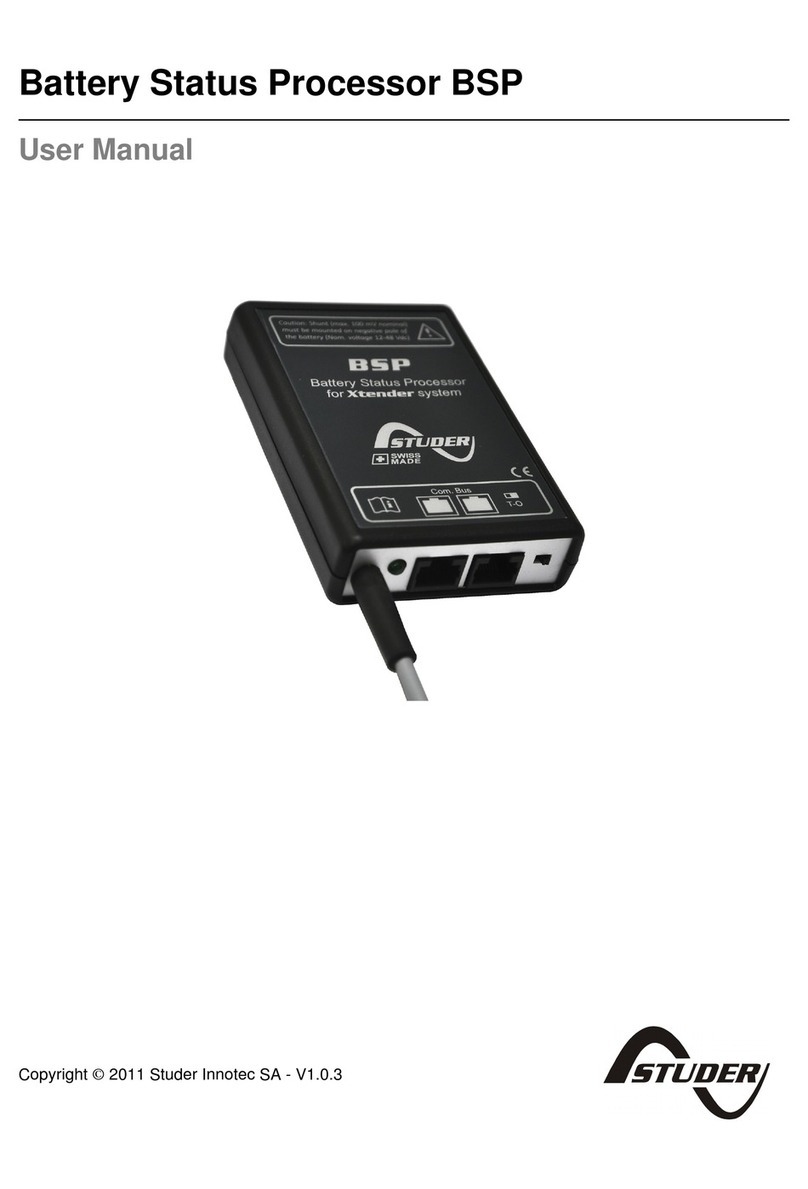CryptOn CCP800 Series Operating manual

Maintenance Guide CCP800 series
1
Emissions Tester
CCP800 series
Maintenance Guide
I324565 Issue B
Crypton - A Brand of the Continental Corporation

2.1 Clean Optics
Do not use chemical based cleaning products
on the optics
2.2 Smoke Head Cable (cable
version)
Always return to the cradle when not in use.
2.3 Clean Charging Pins
(Bluetooth Version)
Always return to the cradle when not in use.
2.4 Sample Pipe
Weekly
Clean the charging pins at least once a
week to avoid corrosion. If unmaintained
you may have communication issues
and/or early life battery failure.
Daily
Ensure cable is kept clean and unkinked.
Failure to maintain may cause
communication problems.
Monthly
Remove dirt from the lens with a clean
cloth or alcohol wipe. If unmaintained this
may cause zero drift issues. More detail
available in the operators manual.
Maintenance Guide CCP800 series
2
Maintenance Guide CCP800 series
3
1 Vehicle Exhaust Gas Analyser (VEGA) Maintenance
1.1 Water Trap
Do not use any chemical based products to
clean the water trap. Soapy water and gently
airline.
1.2 Sample Probe
Do not use any chemical based products to
clean the water trap. Soapy water and gently
airline.
1.3 Filter Bowls
Do not use any Chemical based products to
clean the water trap. Soapy water and gently
airline.
Daily
Check pipe and probe tip for damage.
Gently with an airline blow down the
probe to remove any blockages or
moisture. Don’t leave the sample hoses
on the workshop oor when not in use,
always return them to the trolley. I f
unmaintained this may cause low ow
errors, leak test failures and/or terminal
gas bench errors.
2 Diesel Smoke Meter (DSM) Maintenance
Daily
Remove any moisture from the water trap
and check that the ‘o’ rings are not
damaged or pinched.
Add a small amount of inert silicone
petroleum jelly around the top of the
water trap where the o ring sits. This may
cause terminal gas bench failure and
possible low ow issues if maintenance is
not carried out correctly. Weekly
Remove excess moisture from all lter
bowls (Replace lter weekly if required)
and check that the o rings are not
damaged or pinched. Add a small amount
of inert silicone petroleum jelly around the
top of the water trap where the o ring sits
to help create a seal. This may cause
terminal gas bench failure and possible
low ow or contamination issues if
maintenance is not carried out correctly.
Annually
O2 sensor will need to be checked and/or
replaced every 6 - 12 months depending
on your usage. It is recommended that
you keep a spare available on site.
As required
Under normal circumstances the sampling
head does not require cleaning. If a
sampling pipe becomes restricted with
deposits, the test results can be aected.
To clean a sampling pipe, remove the
sample probe from the smoke head. Blow
through the sample pipe only, using
compressed air.
DO NOT BLOW THROUGH THE
SMOKEHEAD.
1.4 O2 Sensor

Maintenance Guide CCP800 series
5
Maintenance Guide CCP800 series
4
3 CCP800 series Trolley & Ancillaries Maintenance
3.1 Trolley Power
3.2 Bluetooth Oil Temp Probe
Always return the probe back to the holster
when not in use. Failure to follow this
process may lead to poor charge in the
batteries and not enough to complete a test.
3.3 Oil Temp Probe Length
Always adjust the probe to the correct length
prior to starting a test, it should be 10mm
shorter than the dipstick.
Failure to follow this process may cause not
only probe but engine damage.
3.4 RPM Device (Battery Tach)
To minimise the risk of unstable readings
load the battery by turning on headlights,
fog lights etc. Keep the cabin fan o as this
may introduce interference. Some modern
vehicles may not be detected due to “smart
charging systems” cutting the charge when
the battery does not require it. This is not a
fault with the equipment.
Daily
At the end of the day shut down the PC
and then turn the power o using the
switch on the side of the trolley leaving
the unit plugged in and switched on at the
mains. Failure to follow this process may
lead to poor charge in the batteries and
not enough to complete a test.
■ If the test still fails, ‘pinch o’ the pipe immediately after the gas lter bowl (see Fig 3.
overleaf) and retest.
■ If problem cured, check all joints on sample inlet and lter bowl assembly, particularly the
bowl to bowl adapter.
■ Unscrew lter bowls and ensure the 'O' rings are in good condition and have not been
'pinched' during assembly.
4 Vehicle Exhaust Gas Analyser (VEGA) Fault Finding
4.1 Leak Test Failure
The system is drawing in air, possible causes of a leak test failure are faulty joints, particularly in
sample probe/hose assembly and between the two lter bowls. Damaged 'O' ring seals of lter
bowls, particularly if lters have just been changed.
4.2 Checks
■ Pump operation - Is the pump running?
■ Disconnect sample hose from the gas analyser
■ Block the sample inlet and re-test
■ If problem cured, inspect joints for leaks/damage
■ Ensure exible probe is not damaged
■ In cases of extreme exhaust gas temperature the PTFE liner may melt and cause leak test
failure
Check exible P.T.F.E liner
inside braiding. Replace the
exible probe end if
necessary.
Check joints
4.3 Sample probe/hose assembly
Fig. 3

Maintenance Guide CCP800 series
7
Maintenance Guide CCP800 series
6
4.4 Gas Analyser not
communicating
■ Check mains supply OK and the analyser
module is switched on
■ Check communication cable
■ Check platform Cong for conicts
4.5 LHC Residue Test Failure
■ Check sample probe in free air, blow out
sample probe & pipe assembly if required
■ Change gas lters if heavily contaminated
and wash lter bowls with warm soapy
water
4.6 Low Gas Flow
Ensure that the lters have been removed and
cleaned or replaced, sample probe has been
checked for damage and blockages.
4.7 High Lambda Readings
The system is drawing in air, please ensure the
following – All lter bowls are undamaged and
sealed (hand tight and a little bit, do not over
tighten or you will damage the o ring). Sample
probe and pipe are undamaged and
connections are tight.
4.8 Remove Probe from Exhaust
message (at beginning of an MOT
test)
Check the O2 sensor two pin connector is still
connected and the millivolt reading is no less
than 7 millivolts.
5.1 Battery Charging
The DX260-1BT wireless Smoke head contains
a Multi-Cell Rechargeable Battery designed to
give a maximum of 1.5 hours endurance from
a full charge.
The smoke head must always be replaced
on the charging cradle in between tests.
It is also strongly recommended that the
batteries be completely discharged on a
monthly basis by setting the program to
Live Readings with the smoke head off the
charger.
Please note that rechargeable batteries have a
nite lifespan, therefore the battery pack will
need to be replaced periodically if the smoke
head is no longer sustaining sucient charge
for correct operation.
5.2 LED Indication
Smoke head removed from charging
cradle:
■ LED ‘On’ continuously: Smoke head is
running on internal battery
■ LED pulsing ‘ON’ for 2 seconds, ‘OFF’
for 0.5 seconds: Smoke head battery
has reached a Low Voltage condition, and
has less than 10 minutes life left before
auto-shutdown.
■ LED ‘OFF’: Low Voltage condition.
Smoke head will auto shut down. No more
testing possible until smoke head battery
has been recharged.
If the smoke head has received no
communication from host computer for over
6 minutes it will go into ‘Sleep’ mode. Return
the smoke head to the charging unit to invoke
a response.
If the smoke head is taken outside its
maximum operating range of about 100
metres, and wireless communication is no
longer possible, after 6 minutes the smoke
head will go into ‘Sleep’ mode.
To recover from ‘Sleep’ mode, the smoke head
should be put back in its charging cradle, and
the LED function observed.
5 Battery Smoke Meter
(DSM) Fault Finding
Smoke head returned to Charging Cradle:
■ FAST CHARGE (2.5 flashes per
second): The Smoke head is in ‘Fast
Charge’ Mode. The battery should fully
charge within 1.5 hours
■ TOP-UP CHARGE (1 flash per second):
The Fast Charge cycle has completed and
the battery is being brought to full charge
■ SLOW CHARGE (1 flash every 2
seconds): The Smoke head battery is in
‘Slow Charge’ mode, the charging rate
determined by either terminal voltage or,
battery cell temperature
5.3 Battery Charging cont.
■ TRICKLE CHARGE (1 flash every 3
seconds): LED Flashing ON/OFF shows
the smoke head battery is in ‘Trickle-
Charge’ mode indicating that the batteries
are fully charged.
5.4 Fault Diagnosis:
■ FAST FLICKER (8 ashes per second or
more): The smoke head has detected
poor charging contacts. Clean the
contacts on both the cradle and the
smoke head feet and replace on charger
■ LED NOT ILLUMINATED: Return the
Smoke head to Charging Cradle. LED
should display according to Charging level
required.
■ LED NOT ILLUMINATED WHEN
SMOKEHEAD IS ON CHARGING
CRADLE: Check that the smoke head is
correctly seated on the charging cradle.
The smoke head has twin connectors on
each insulated foot, and may be
connected either way round.
Check the charging cradle is connected to the
240V AC mains
Check that the sprung connectors that
transmit the charging current on the
charging cradle are clean and not stuck in
a depressed condition.
Check that the charging connectors on the
insulated mounts on underside of the
smoke head are clean and free of dirt and
obstructions.
To check the charging voltage at the
charging cradle:
■ Connect a digital multi-meter set to
measure up to 30V DC to the two
charging
■ Connectors on the charging cradle and
depress the central charging switch
■ A voltage of 28V to 30V DC should
register on the multi-meter display
5.5 Battery Replacement

Maintenance Guide CCP800 series
9
Maintenance Guide CCP800 series
8
Removal:-
■ Unscrew the knurled knob (1) and open
up both end caps.
■ Remove the four pan head screws (2) &
(3) securing both end plates and carefully
ease the plates clear of the housing
■ At the fan end, disconnect the 2-pin
battery plug (4a) and the 2-pin fan plug
(4b)
■ At the probe end, disconnect the 3-pin
plug (5)
■ Depending on which version you have
either - loosen the two screws (6a) or
remove the plastic spacer (6b) securing
the battery pack
■ Discard the two securing screws or the
plastic spacer– they are no longer
required
Fig. 1 - Activation link - Transit position
Fig. 2 – Activation link – Live position
Replacement:
■ Your new battery pack is supplied with the
activation link in the ‘transit’ position
(marked ‘X’) see Fig. 1. This must be
moved to the ‘Live’ position (Marked ‘√’)
to activate the battery before it is installed
into your smoke head, see Fig. 2
■ Slide the new battery pack into position
(note orientation)
■ Re-connect the 2-pin plug (4a), the 2-pin
plug (4b), and the 3-pin plug (5)
■ Relocate the end plates to the smoke
head and loosely secure with 4 pan head
screws (7)
■ Check that the lens housings are fully
located, then t the end caps and secure
with the knurled knob. Fully tighten the
knurled knob then slacken half a turn (8)
■ Push the end plate upwards as far as it will
go, and then fully tighten the 4 pan head
screws.
■ Fully tighten the knurled knob on the end
caps
5.6 Lens Cleaning
Two lenses are tted in the smoke head, one
at either end. The smoke meter checks the
cleanliness of the lenses at the start of each
test, and the PC will provide a warning when
cleaning is required.
New orientation of lens housing (arrow up)
5.7 Accessing a lens
■ If tted, remove the sampling pipe
■ Unscrew the knurled knob at the sampling
pipe end of the sampling head and
remove the end cap.
■ Carefully pull out the lens housing and
wipe the lens with a soft cloth (if required,
a little methylated spirit will assist
cleaning)
Note:
The orientation and remove the battery
pack. Do not remove by pulling the
cables, and ensure the connectors do not
foul any components during removal of
the board.
Move the activation link from the transit
position Fig. 1 to the live position Fig. 2.
■ Ret the lens housing with the arrow
pointing upwards (a little silicon grease on
the 'O' ring will assist tment – but do not
get on lens!)
■ Ret the end cap and tighten the knurled
knob
5.8 Cable & Fan Removal
Should the cable become damaged and
require renewal, the procedure is as
follows:
■ Unscrew the knurled knob (1) and remove
the end cap
■ Remove the four countersunk screws (2)
which secure the internal fan and grille to
the smoke head end plate
■ Remove the four pan head screws (3)
securing the end plate and carefully ease
the plate clear of the housing
■ Disconnect the 4-pin multi-plug (4a). If
carrying out a fan replacement disconnect
the 2-pin plug (4b) and replace the fan.
Carefully t the fan and fan grille to the
end plate (4 countersunk screws)
■ Remove the 4 wires from the 4-way plug.
Undo the metal cable clamp from the end
plate. Loosen the cable gland strain relief
and remove the cable from the end plate
■ Re-t the new cable through the cable
gland strain relief and secure to the end
plate with the metal clamp (Important:
secure the clamp on the earth braid of the
cable). Re-t the 4-way plug. Ensure the
NOTE:
Ensure the end cap locates fully against
the body of the sampling head before
tightening the knob. If not correctly
located, the lens housing is probably not
fully home.
1. Clean the lens at the other end of the
smoke head in the same way.
NOTE:
The end cap for the sampling pipe must
be tted at the end away from the
sampling head cable.

Maintenance Guide CCP800 series
11
Maintenance Guide CCP800 series
10
cable gland strain relief is tightened
■ Connect the 4-pin multi-plug (4a) and the
2-pin plug (4b)
■ Locate the end plate to the smoke head
(cable on left hand side) and loosely
secure with the four pan head screws
■ Check that the lens housing is fully in,
then t the end cap and secure with the
knurled knob. Fully tighten the knurled
knob then slacken half a turn
■ Push the end plate upwards as far as it will
go, and then fully tighten the 4 pan head
screws
■ Fully tighten the knurled knob on the end
cap
5.9 Adjusting Oil Temperature
Probe Length
Before testing, the probe must be adjusted
to the correct length as follows:
Lay it alongside the vehicle dipstick (see
illustration) and adjust the position of the
depth stop until the eective length of the
probe is approximately 10mm shorter than
the dipstick.
WARNING:
ENSURE THAT THE OIL
TEMPERATURE PROBE IS SET TO
THE CORRECT DIPSTICK LENGTH
AND THAT IT IS CLEAN FROM
DEBRIS BEFORE INSERTING INTO
THE ENGINE. FAILURE TO DO SO
MAY RESULT IN SERIOUS DAMAGE
TO THE PROBE AND/OR ENGINE.
6 Vehicle Exhaust Gas Analyser (VEGA)
Consumables
A2C88837300
Primary Filter
680EN1
A2C87827300
Gas Filter
680EN1
A2C1839470000
Gas Filter
682EN1
A2C1839450000
Water Filter
682EN1
A2C88114200
Pre-Filter
680EN1 & 682EN1
A2C88660300
Sample Probe End
680EN1 & 682EN1
A2C87844900
Sample Probe (Complete)
680EN1 & 682EN1
A2C88396300
Oxygen Sensor aka O2 Cell
680EN1 & 682EN1
A2C88028300
Filter Bowl O Rings
680EN1

Apart from the routine maintenance and
adjustments stipulated in this manual the
equipment must not be tampered with in any
way. All further servicing must be carried out
only by an engineer from our Authorised
Agents. Failure to observe these conditions
will invalidate the Guarantee.
10.1 UK Customers
If you require a Service Engineer to attend ON
SITE within the UK, for any of the following
reasons:
■ An equipment fault
■ For machine calibration
■ You need spare parts
■ Equipment covered by this manual
requires returning for factory overhaul.
10.2 Overseas Customers
Service and spare parts cover outside the UK
is provided by the agent from whom your
equipment was purchased.
Sales
+44 1 21 7 2 5 14 0 0
salesorders@continental-
corporation.com
Support
+ 4 4 1 2 1 7 2 5 1 3 6 6
uksupport@continental-
corporation.com
Continental Automotive Trading UK
Ltd
36 Gravelly Industrial Park
Birmingham
B24 8TA
United Kingdom
Maintenance Guide CCP800 series
13
Maintenance Guide CCP800 series
12
Sample Hose
A2C88171800
DX.260/270 Sample Hose
Battery Tacho Power/Sensing cable
A2C87921500
CDSS3/4/6 Battery Tach
Tacho Comms Cable
A2C89483300
CDSS6 COMMS CABLE 2M
Battery Tacho Power/Sensing Cable
A2C89024000
CDSS6 Vehicle Socket Cable
Cable – Smokehead Cable Assembly
A2C89189200
DX.260 Fixed Outlet Cable 10M
Battery Pack
A2C88489000
DX.260BT Battery Pack
Fan Kit
A2C88247300
DX.260 Fan Kit
Oil Temperature Probes
A2C89335700
Oil Temperature Probe 0.75M
A2C89424100
Oil Temperature Probe 2.5M
Temperature Probe Adapters
A2C88830200
Wireless Probe Adapter
A2C88694100
5m cabled Adapter
7 Diesel Smoke Meter (DSM) Consumables 8 Product Support
Disposal of equipment
■ Do not dispose of this equipment as miscellaneous solid municipal waste
but arrange to have it collected separately.
■ The re-use or correct recycling of electronic equipment (EEE) is important
in order to protect the environment and the wellbeing of humans.
■ In accordance with European Directive WEEE 2002/96/EC, special
collection points are available for the delivery of waste electrical and
electronic equipment.
■ The public administration and producers of electrical and electronic
equipment are involved in facilitating the processes of the re-use and
recovery of waste electrical and electronic equipment through the
organisation of collection activities and the use of appropriate planning
arrangements.
■ Unauthorised disposal of waste electrical and electronic equipment is
punishable by law with appropriate penalties.
9 Contact

Maintenance Guide CCP800 series
14
Continental Automotive Trading UK Ltd, 36 Gravelly Industrial Park, B24 8TA
Crypton - A Brand of the Continental Corporation
Legal notice
Errors and omissions excepted. The Company reserves the right to introduce
improvements in design or specification without prior notice. The sale of this product
is subject to our standard terms, conditions and relevant product warranty.
Other CryptOn Measuring Instrument manuals

